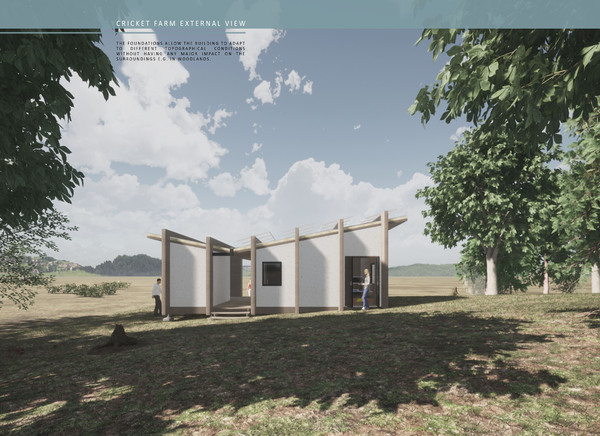With the focus on sustainable design, the two schemes proposed throughout Studio 1, 2 and 3 featured construction processes and materials with low environmental impact. The initial stages considered the impact the food that we eat has on our planet and alternative sources of protein through the design of a sustainable cricket farm. Live collaboration with the client led to a proposal accommodating the rearing process of crickets and a public gallery for visitors, serving as an education space, helping to promote the idea within the UK context. The construction methods proposed allow the farm to be adapted to any topographical conditions and the prefabricated modular construction supports quick assembly and disassembly time.
The latter part of the year focused on the research into the problems of the existing UK housing and how it can be redefined addressing the sustainability and social issues with the design encouraging improved social interaction and comfort of the occupants leading to stronger communities and more pleasurable places to live.
The proposal is a housing estate featuring a new housing typology with the living rooms serving as gateways to elevated walkways interconnecting the dwellings within the neighbourhood, creating social spaces and encouraging interaction between residents. The use of recycled materials from the demolition of the former warehouses located on the site and the employment of cross laminated timber for the floor and wall modules reduce the environmental footprint of the scheme, minimise waste and enable better airtightness and thermal performance, establishing a truly low carbon scheme.


